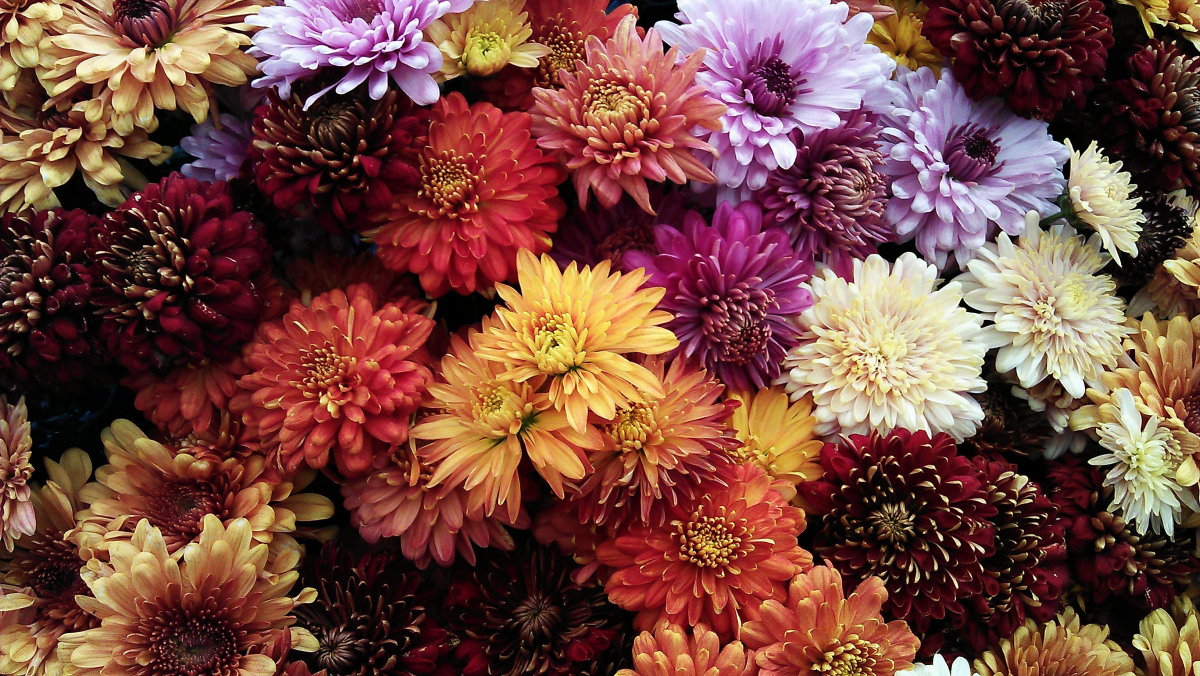Chrysanthemums, also known as mums or chrysanths, are iconic flowers that have captured the hearts of people around the world with their diverse colors, intricate petal formations, and cultural significance. With a rich history dating back thousands of years, these versatile blooms hold a special place in gardens, floral arrangements, and cultural celebrations. In this article, we will delve into the captivating world of chrysanthemums, exploring their characteristics, cultivation, symbolism, and the various ways they add beauty and meaning to our lives.
Section 1: Characteristics and Varieties
- A Spectrum of Beauty: Chrysanthemums showcase a wide array of colors, including vibrant hues of yellow, pink, red, purple, and white. They boast a range of petal formations, from the classic daisy-like blooms to pom-pom shapes, spider-like forms, and intricate anemone-centered varieties.
- Versatile Blooms: Chrysanthemums come in various sizes, from petite button blooms to large, showy flowers. Their versatility makes them suitable for various floral arrangements, garden beds, borders, and potted displays.
Section 2: Cultivation and Care
- Sun and Soil Requirements: Chrysanthemums thrive in full sun, requiring at least six hours of direct sunlight per day for optimal growth and abundant blooms. They prefer well-draining soil with moderate fertility and benefit from regular watering, especially during dry spells.
- Propagation and Pruning: Chrysanthemums can be propagated from seeds, cuttings, or divisions. Early spring is an ideal time to plant chrysanthemums, allowing ample time for root development before the flowering season. Pruning, pinching, and disbudding techniques can help shape the plants and promote bushier growth.
Section 3: Symbolism and Cultural Significance
- Beauty and Joy: Chrysanthemums symbolize beauty, joy, and optimism in many cultures around the world. In Eastern cultures, particularly in China and Japan, they are considered symbols of autumn, longevity, and happiness. They hold special significance during festivals and celebrations, including the Chinese Double Ninth Festival and the Japanese Festival of Happiness.
- Remembrance and Tribute: In Western cultures, chrysanthemums are often associated with remembrance and used as tributes on occasions like All Saints’ Day and Memorial Day. They are placed on gravesites and memorial sites to honor and remember loved ones.
Section 4: Uses and Variations
- Cut Flowers and Floral Arrangements: Chrysanthemums are popular choices for cut flowers and floral arrangements due to their vibrant colors, long vase life, and varied forms. They add a touch of elegance and charm to bouquets, centerpieces, and corsages for weddings, special events, and everyday displays.
- Medicinal and Culinary Applications: In traditional medicine systems, chrysanthemums have been used for their potential medicinal properties, including promoting relaxation and soothing ailments. In some culinary traditions, chrysanthemum petals are used to brew herbal teas and infusions, appreciated for their delicate floral flavor.
Conclusion: Chrysanthemums, with their diverse colors, intricate petals, and cultural symbolism, are truly a tapestry of beauty and significance. Whether adorning gardens, brightening up floral arrangements, or carrying cultural traditions and symbols, chrysanthemums have played a prominent role in human history and continue to captivate with their allure. As we appreciate their vibrant blooms and embrace their cultural meanings, chrysanthemums remind us of the joy, beauty, and rich heritage that flowers bring to our lives.
